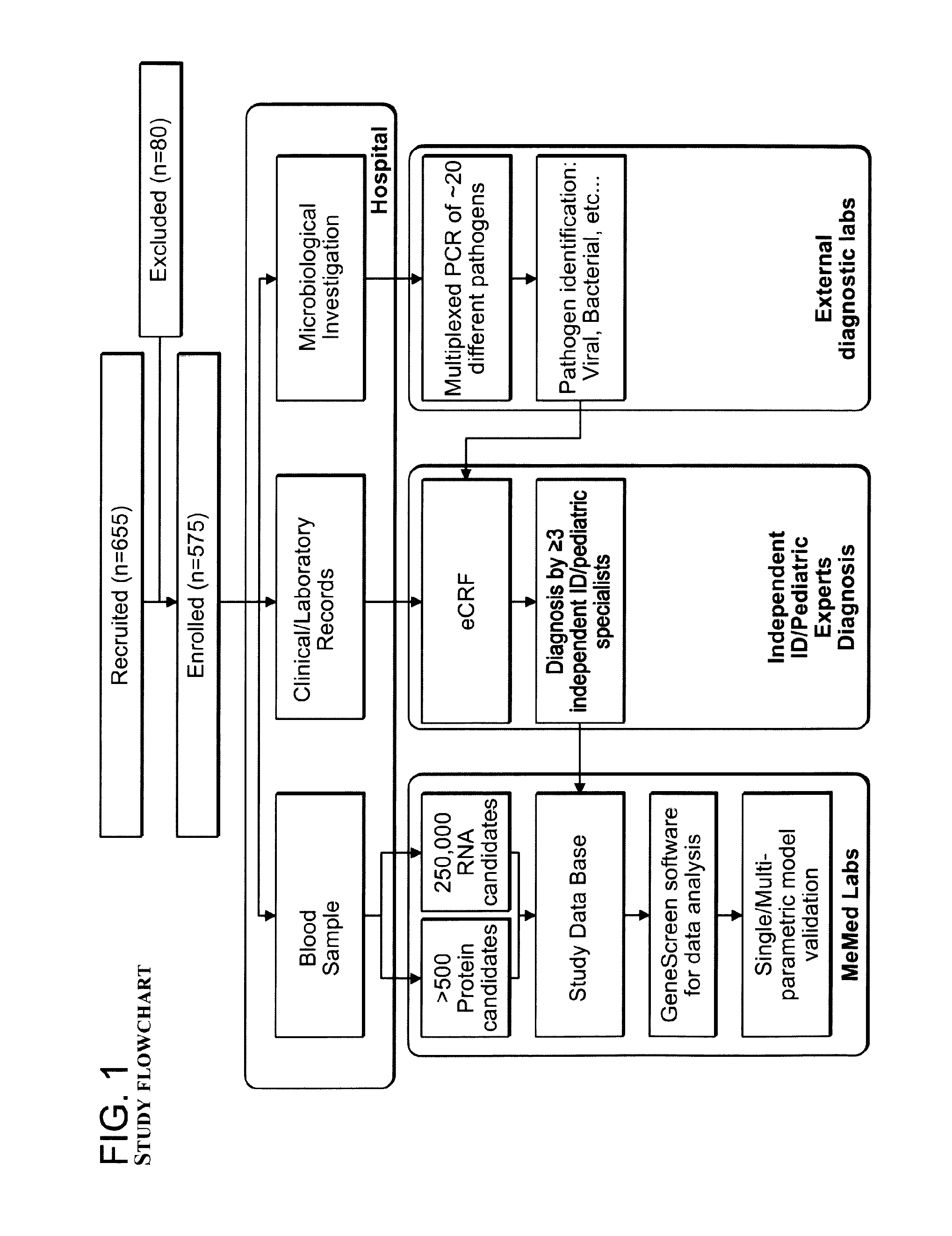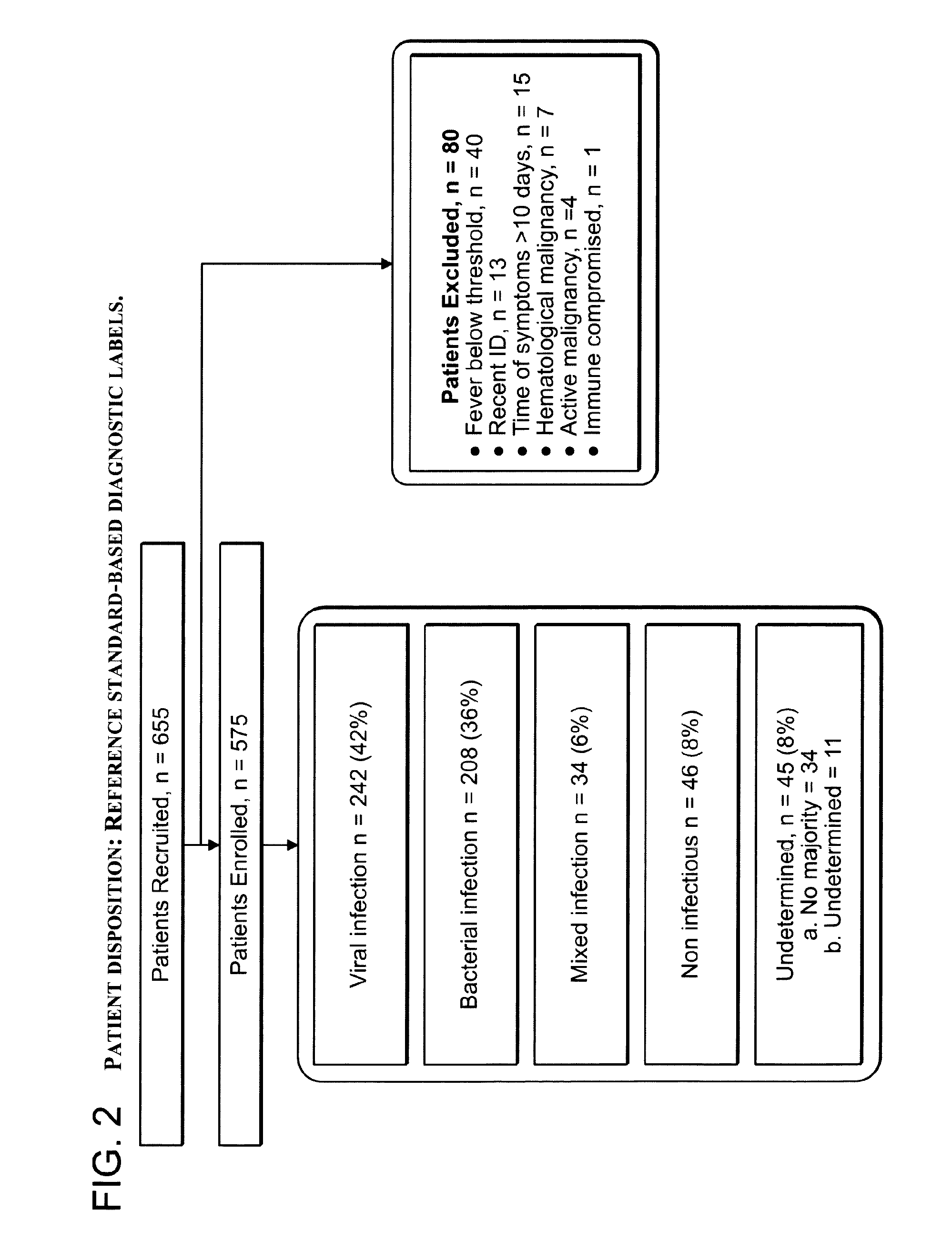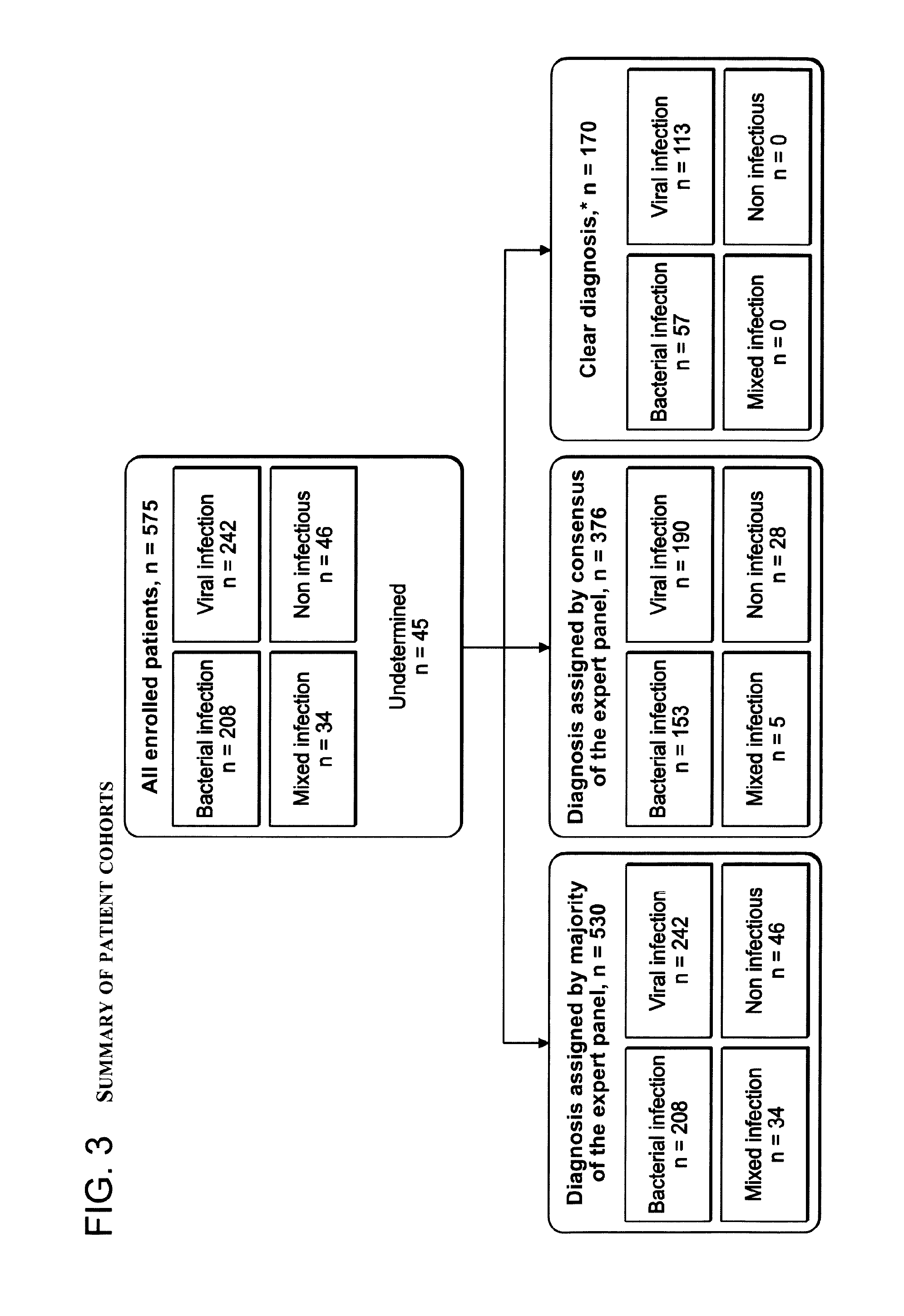Signatures and determinants for diagnosing infections and methods of use thereof
a technology of signs and determinants, applied in the field of identification of biological signatures and determinants, can solve the problem that the host response to infection fails to robustly distinguish between patients with different underlying infection types, and achieves the effect of preventing unnecessary antibiotic treatmen
- Summary
- Abstract
- Description
- Claims
- Application Information
AI Technical Summary
Benefits of technology
Problems solved by technology
Method used
Image
Examples
example 1
General Methods
Clinical Study Overview
[0369]We performed a multi-center, observational, prospective clinical study whose goal was to develop and test a DETERMINANT-signature for the purpose of rapid and accurate diagnosis of patients with viral and bacterial diseases. We recruited a total of 655 patients of whom 609 had a suspected infectious disease and 46 had a non-infectious disease (control group). The study was approved by the institutional review boards (IRB) of Bnai Zion and Hillel Yaffe Medical Centers in Israel, where patients were recruited from 2010 to 2012.
[0370]An overview of study workflow is depicted in FIG. 1. Briefly, a data-minable electronic case report form (eCRF) was used to record the clinical investigations, medical history, microbiological, radiological, and laboratory data of each patient (eCRF records were designed to preserve patient anonymity). Based on the clinical syndrome, one or more of the following samples were sent to thorough microbiological and m...
example 2
To Facilitate a Diagnostic Solution that is Broadly Applicable we Performed a Clinical Study on a Highly Heterogeneous Cohort of Patients
[0437]Summary of the Patient Cohorts Used in this Study
[0438]A total of 655 patients were recruited for this study and 575 patients were eligible for enrollment. Based on the reference standard process described above, patients were assigned to five different diagnosis groups: viral infection (42% of patients), bacterial infection (36% of patients), mixed infection (6% of patients), non-infectious disease (8% of patients), and undetermined (8% of patients) (FIG. 2). In total, 92% of all enrolled patients were assigned a diagnosis, a rate which approaches the literature-documented limit (Clements et al. 2000; Johnstone et al. 2008; Hatipoglu et al. 2011).
[0439]The development and testing of the DETERMINANT signature technology was performed in a series of patient cohorts with increased confidence levels, as described above (Creating the reference st...
example 3
Measurements of DETERMINANT Levels were Highly Reproducible Across Day-to-Day Technical Repeats and Different Measurement Platforms
Assay Performance and QA
[0456]Calibration curves were linear within the physiological concentration range Standard preparations provided by the assay manufacturer served as a reference standard for the calibration curves. Representative samples of calibration curves for TRAIL, Mac-2BP and SAA are presented in FIG. 12. We found that all the optimal cutoff values between bacterial and viral infections were in the linear range of the scale and that all standard curves exhibited a dynamic range of ˜2-2.5 log scale.
Intra-Assay Variability
[0457]We tested the intra-assay variability on eight independent serum samples of patients within the same ELISA plate (FIG. 13). We found intra-assay CV % of 4.4%, 7.5% and 4.4% for TRAIL, Mac-2-BP, and SAA respectively. These values are within the range of normal intra-assay variation compared with other manual ELISA assays...
PUM
| Property | Measurement | Unit |
|---|---|---|
| Temperature | aaaaa | aaaaa |
| Time | aaaaa | aaaaa |
| Electric charge | aaaaa | aaaaa |
Abstract
Description
Claims
Application Information
 Login to View More
Login to View More - R&D
- Intellectual Property
- Life Sciences
- Materials
- Tech Scout
- Unparalleled Data Quality
- Higher Quality Content
- 60% Fewer Hallucinations
Browse by: Latest US Patents, China's latest patents, Technical Efficacy Thesaurus, Application Domain, Technology Topic, Popular Technical Reports.
© 2025 PatSnap. All rights reserved.Legal|Privacy policy|Modern Slavery Act Transparency Statement|Sitemap|About US| Contact US: help@patsnap.com



